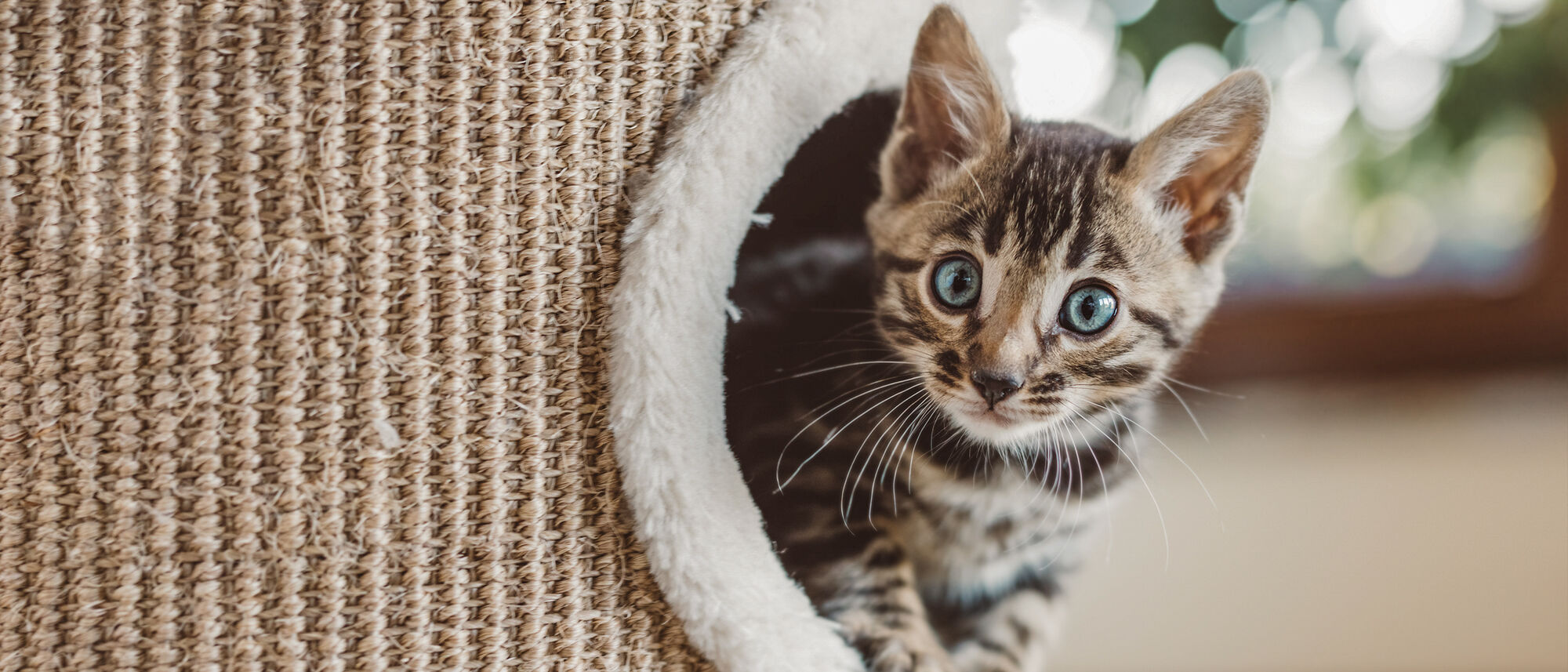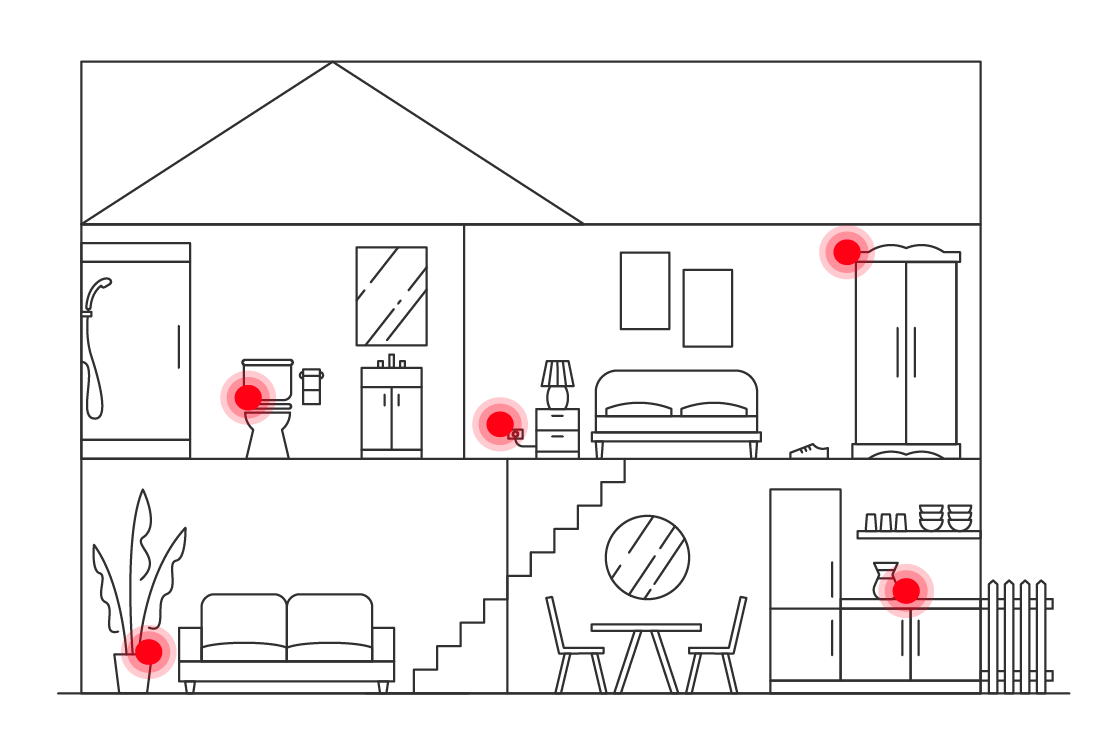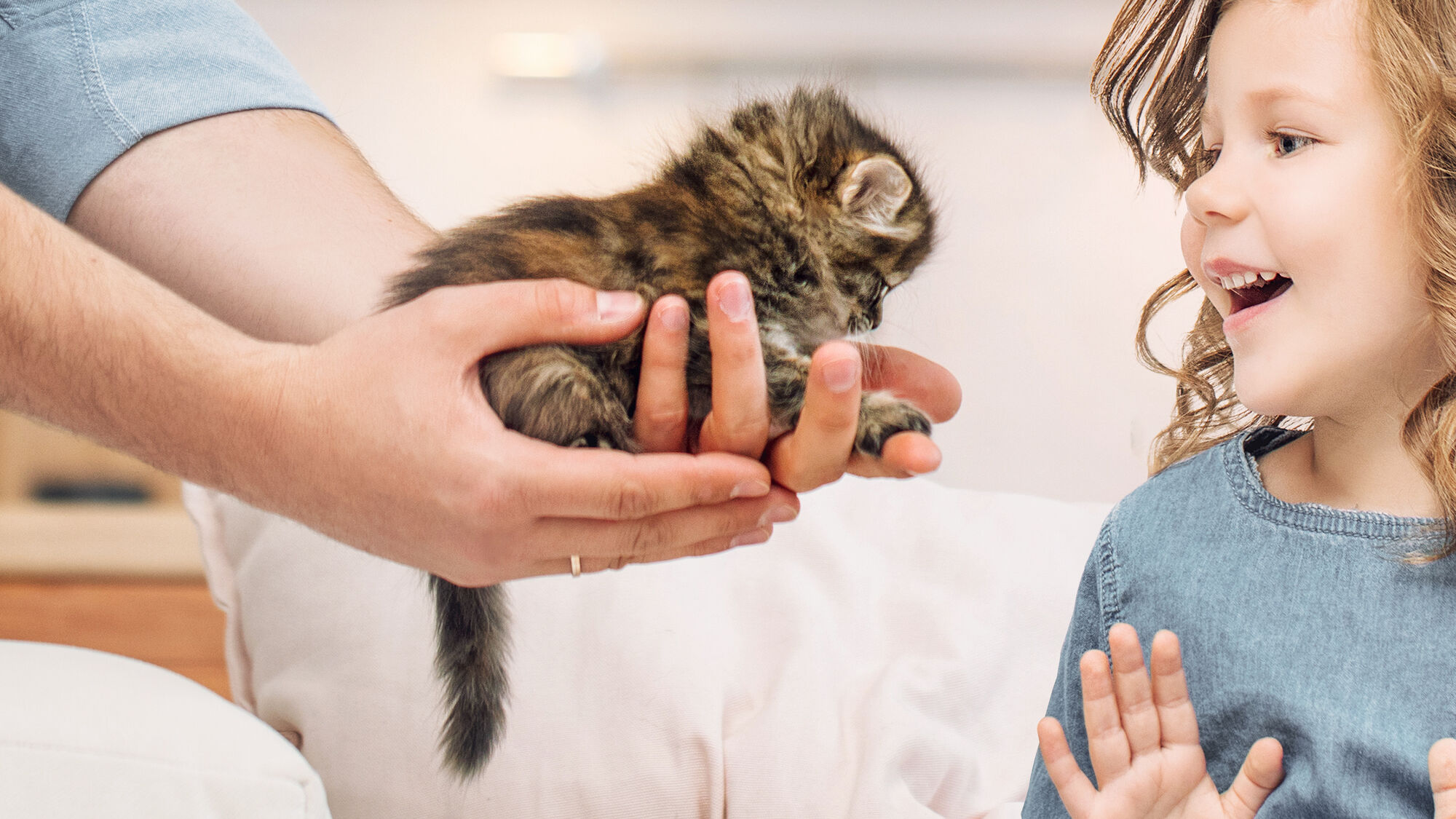You’re bound to be excited about welcoming your new kitten home, but after leaving their mother and littermates behind, it's important that you introduce your kitten to their new life carefully.
A hectic first encounter filled with an assortment of unfamiliar sights, sounds, and smells, can be overwhelming for a kitten. That’s why it’s best to take things slowly, especially during the first 24 hours, to help them feel safe and comfortable in your home.
What do I need for a new kitten?
Before bringing a kitten home for the first time, you should ensure that you have all the necessities – like bedding, bowls, litter tray, a cat carry case, and food. You’ll find the full list on our bringing home a kitten checklist.
You’ll also want to prepare your household, as there are things within your home that are dangerous for a kitten, such as toxic plants, electrical wires, and sharp objects. A list of safety checks can be found in our page on how to prepare for a kitten.
As well as covering the important safety checks, it’s recommended that you adapt your home to your kitten’s needs by creating comfortable places for them to perch up high, or areas where they can hide if they’re overwhelmed.





